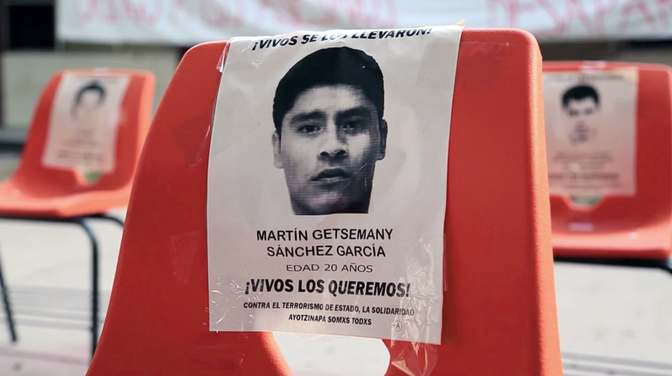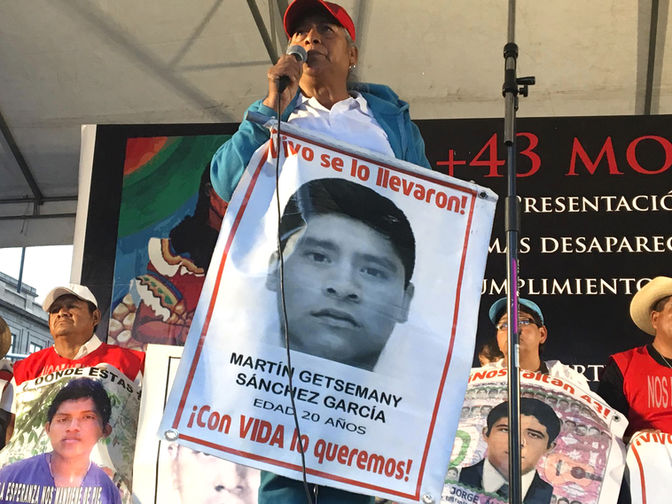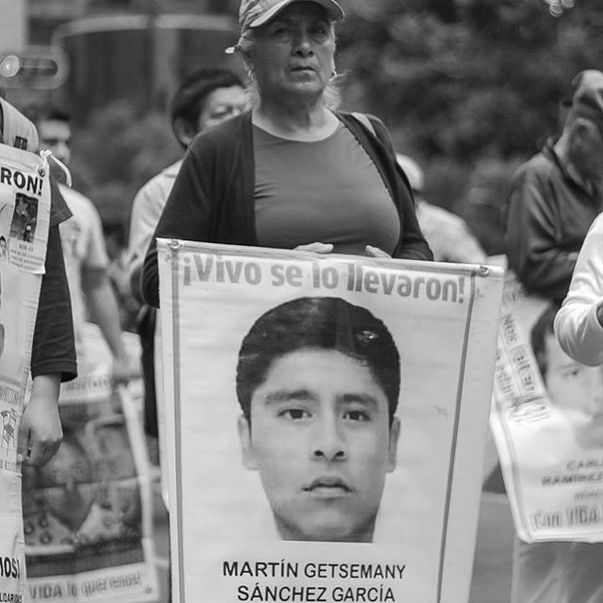We are not the only ones that are suffering and looking for our family members. There are thousands and thousands of people that have disappeared, especially young students.
- Joaquina García Velázquez
When Martín Getsemany Sánchez García learned to walk, his mother, Joaquina, gave him soccer balls, cleats, and jerseys. He started playing soccer when he was five, and before he was eight he already showed excellent technique. He never lost his love for the sport, even when he entered the Rural Normal in Ayotzinapa, where he became a defender on the school team.
Martín, the seventh of eight children, is passionate, outgoing, a conversationalist, and has always been restless and mischievous. When he was younger, he dressed as a little devil in children’s festivals and his godmother joked: "Everyone chooses a character according to his personality.”
Rebellious in his adolescence, Martín would sneak out of the house to go dancing. He played music loudly, and complained if he was asked to help with family chores. However, when he returned home to visit after completing the testing week in Ayotzinapa, he had changed: he cleaned the house, and happily ran errands for his mother.
Martín is from Zumpango del Río, in the central region of the state of Guerrero, a place that in Nahuatl means “flag of skulls.” Zumpango del Río is home of the traditional and always long-awaited Feria de la Candelaria (Candlestick Fair) which has been held every February since 1847. Thousands of people from both the municipal capital of Zumpango and neighboring municipalities participate in the festivities which include jaripeos, horse racing, cultural and sports events, traditional dance, and celebratory parade.
In order to get her eight children ahead and give them a higher education, Doña Joaquina worked as a janitor in a school, sold fruit outside her home, and pozole on Saturdays and Sundays. Dona Joaquina had prepared pozole to eat with Martín on September 27; she had spoken to him shortly before the attacks in Iguala, to tell him that she would see him on Saturday, but he never arrived.
Historically, activist mothers have been at the forefront of movements for justice for the disappeared throughout Latin America. Las Madres de la Plaza de Mayo in Argentina are a famous example; their white headscarves continue to symbolize the struggle to find victims of disappearance by the State. As was the case during Mexico’s Dirty War, the dramatic increase in disappearances in Mexico since 2006 and the events of September 26-27 2014 in Iguala have also been met by extraordinary political organizing led by activist mothers. Joaquina García Velázquez is one of thousands of mothers in Mexico who have demanded state action to find the disappeared through public protests, marches, hunger strikes in front of government buildings, and legislative advocacy efforts. Wherever the struggle takes her, she reminds people that in addition to the 43 students there are thousands of missing youth, where women are the most vulnerable: “In Guerrero, every day there are women and girls and young people missing and there is no response to what happens with them. As mothers and women we want that to no longer continue."

















